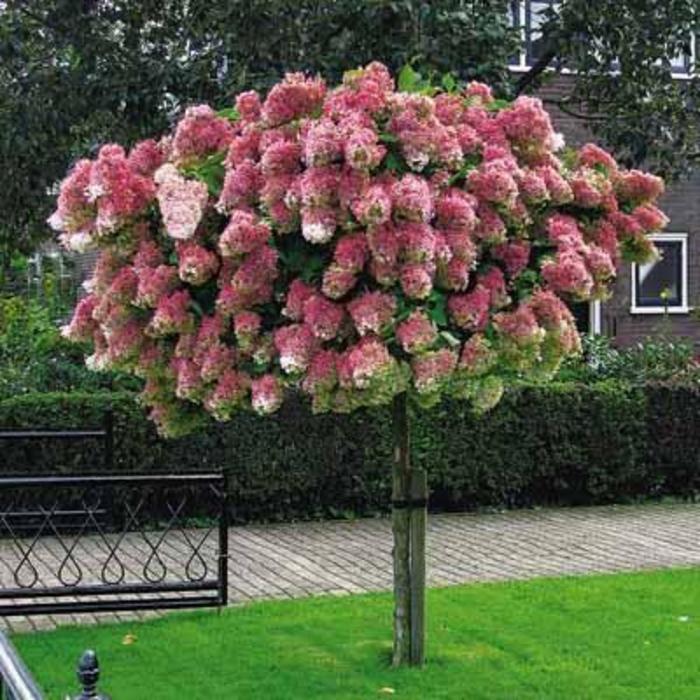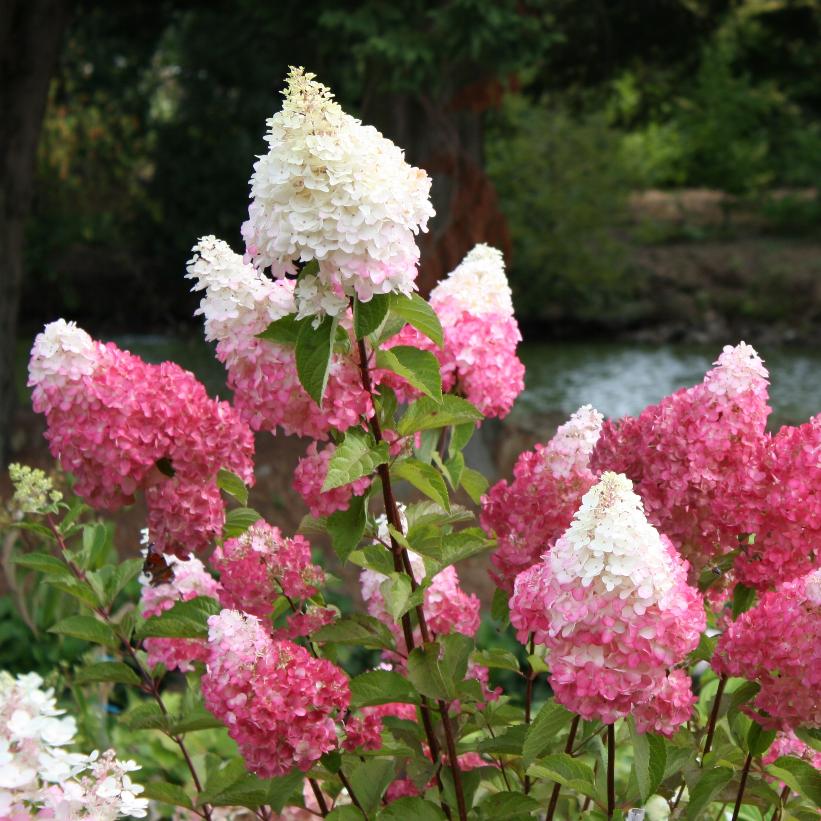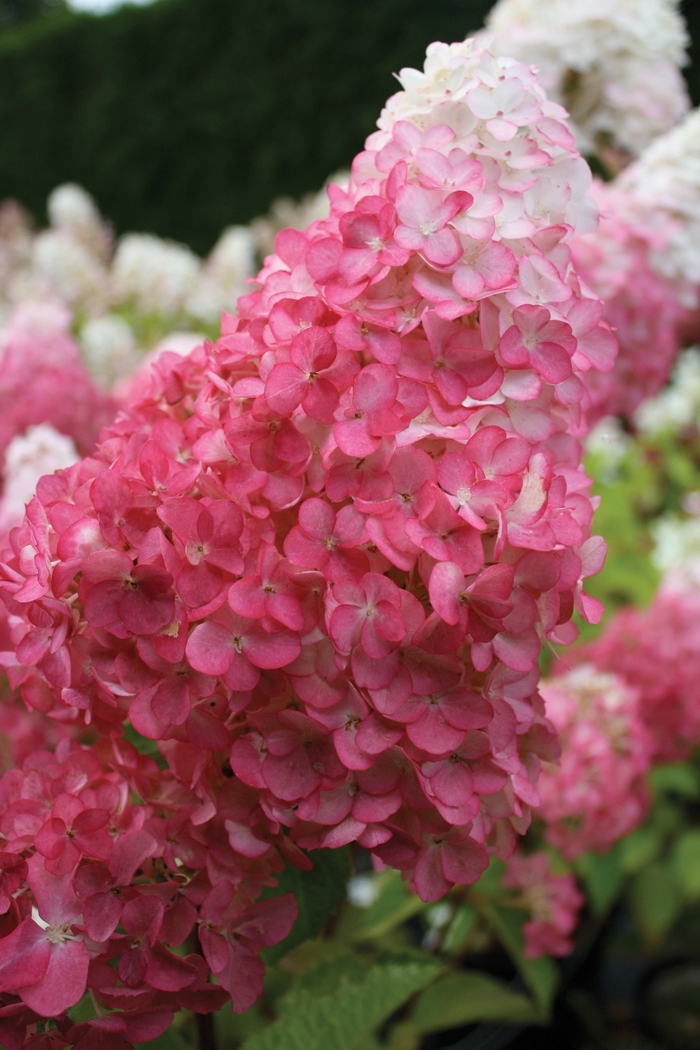The Hydrangea Paniculata Renhy: A Stunning Shrub That's
Hydrangea paniculata Renhy is a stunning shrub that's easy to care for. It's a popular choice for gardens because of its large, showy flowers that bloom from midsummer to fall. The flowers start out creamy white and gradually turn pink and strawberry red as they age.
Renhy hydrangeas are relatively tall, growing to 6-8 feet tall and 4-5 feet wide. They have dark green leaves that are oval to ovate in shape. The flowers are arranged in large, conical panicles that can reach up to 8 inches long.
Renhy hydrangeas are a good choice for full to part sun. They prefer moist, well-drained soil. They are not as fussy about soil pH as some other types of hydrangeas, but they do best in slightly acidic soil.
Renhy hydrangeas are relatively easy to care for. They need to be watered regularly, especially during the summer months. They should be fertilized once a year in the spring. In the fall, the spent flower panicles should be trimmed back to encourage new growth.
Renhy hydrangeas are relatively pest- and disease-resistant. However, they can be susceptible to powdery mildew if they are planted in humid conditions.
If you're looking for a stunning shrub that's easy to care for, Hydrangea paniculata Renhy is a great option. It's a beautiful addition to any garden and will provide you with months of enjoyment.
Main Content
Growing Renhy Hydrangeas
Renhy hydrangeas are relatively easy to grow. They prefer full to part sun, but they can also tolerate some shade. They need moist, well-drained soil. The soil pH should be slightly acidic, but Renhy hydrangeas are not as fussy about soil pH as some other types of hydrangeas.
Renhy hydrangeas should be watered regularly, especially during the summer months. They should be fertilized once a year in the spring. In the fall, the spent flower panicles should be trimmed back to encourage new growth.
Pests and Diseases
Renhy hydrangeas are relatively pest- and disease-resistant. However, they can be susceptible to powdery mildew if they are planted in humid conditions. If you notice powdery mildew on your Renhy hydrangea, you can treat it with a fungicide.
Propagation
Renhy hydrangeas can be propagated by cuttings or by division. Cuttings should be taken in the spring or summer. Division should be done in the fall or spring.
Care Tips
- Water regularly, especially during the summer months.
- Fertilize once a year in the spring.
- Trim back the spent flower panicles in the fall.
- Protect from powdery mildew if necessary.
Conclusion
Renhy hydrangeas are a beautiful and easy-to-care-for shrub that is a great addition to any garden. They are relatively pest- and disease-resistant and can be propagated by cuttings or by division. If you're looking for a stunning shrub that will add color and interest to your garden, Renhy hydrangea is a great option.
FAQ of hydrangea paniculata renhy
Q1: What is Hydrangea paniculata Renhy?
A: Hydrangea paniculata Renhy is a cultivar of Hydrangea paniculata, a species of flowering shrub in the Hydrangea family. It is known for its large, panicle-shaped flowers that bloom in white, pink, or blue. Renhy is a particularly hardy cultivar that is resistant to pests and diseases. It is also a relatively easy plant to care for, making it a popular choice for home gardeners.
Q2: What are the colors of Hydrangea paniculata Renhy?
A: The flowers of Hydrangea paniculata Renhy can bloom in white, pink, or blue. The color of the flowers is determined by the pH of the soil. In acidic soil, the flowers will bloom blue. In alkaline soil, the flowers will bloom pink. In neutral soil, the flowers will bloom white.
Q3: How to grow Hydrangea paniculata Renhy?
A: Hydrangea paniculata Renhy is a relatively easy plant to grow. It prefers full sun to partial shade and moist, well-drained soil. It is important to water the plant regularly, especially during the summer months. The plant should be fertilized once a year in the spring.
Q4: How to care for Hydrangea paniculata Renhy?
A: Hydrangea paniculata Renhy is a relatively low-maintenance plant. However, there are a few things you can do to keep it healthy and thriving.
- Water the plant regularly, especially during the summer months.
- Fertilize the plant once a year in the spring.
- Prune the plant in the early spring to remove dead or damaged branches.
- Protect the plant from pests and diseases.
Q5: What are the pests and diseases that can affect Hydrangea paniculata Renhy?
A: Hydrangea paniculata Renhy is a relatively resistant plant, but it can be affected by a few pests and diseases.
- Aphids: Aphids are small, sap-sucking insects that can cause leaves to wilt and curl. They can be controlled with insecticidal soap or neem oil.
- Powdery mildew: Powdery mildew is a fungal disease that causes a white, powdery coating on leaves. It can be controlled with a fungicide.
- Leaf spot: Leaf spot is a fungal disease that causes brown or black spots on leaves. It can be controlled with a fungicide.
Image of hydrangea paniculata renhy
5 different images of "hydrangea paniculata renhy" from Pinterest:
- Image 1: A full-size shrub of Hydrangea paniculata Renhy in full bloom. The flowers are a pale pink color with a white center.

- Image 2: A close-up of the flowers of Hydrangea paniculata Renhy. The flowers are very delicate and have a cascading effect.

- Image 3: A single flower of Hydrangea paniculata Renhy. The flower is a beautiful shade of pink and has a slightly puckered appearance.

- Image 4: A group of Hydrangea paniculata Renhy shrubs in a garden setting. The shrubs are surrounded by other flowers and plants, creating a beautiful and colorful display.

- Image 5: A vase of cut Hydrangea paniculata Renhy flowers. The flowers are arranged in a simple vase and make a stunning centerpiece for a table or shelf.

Post a Comment for "The Hydrangea Paniculata Renhy: A Stunning Shrub That's"